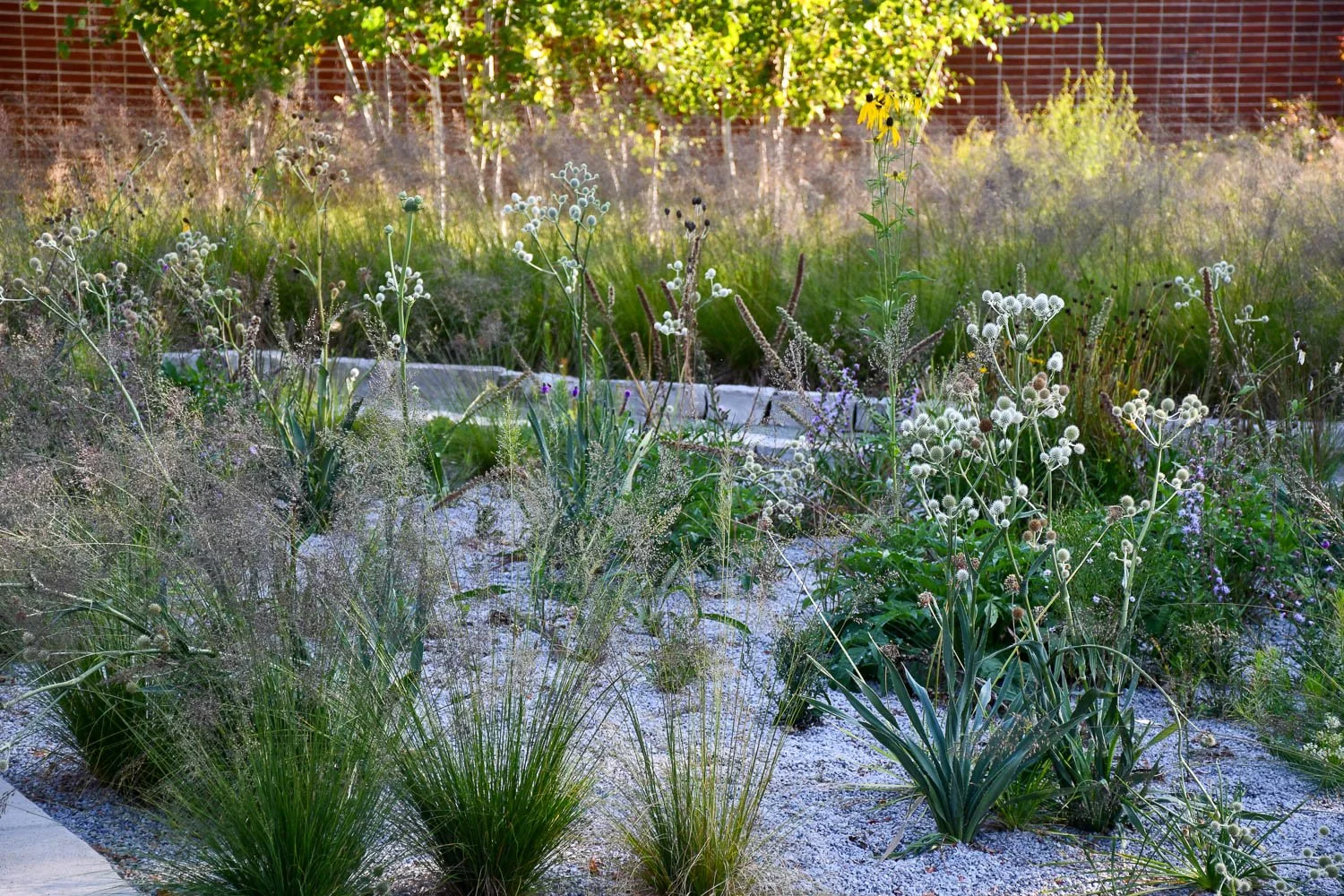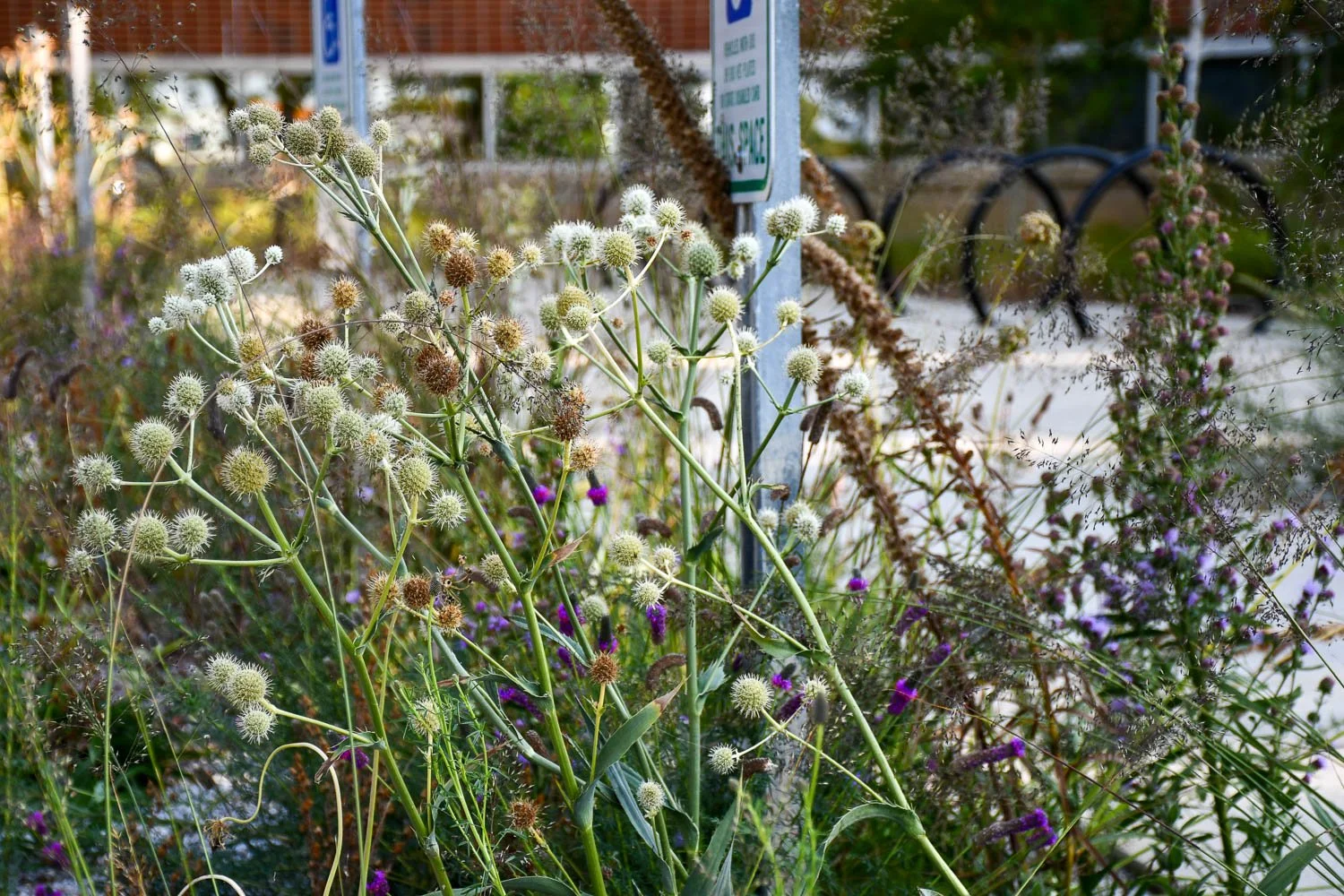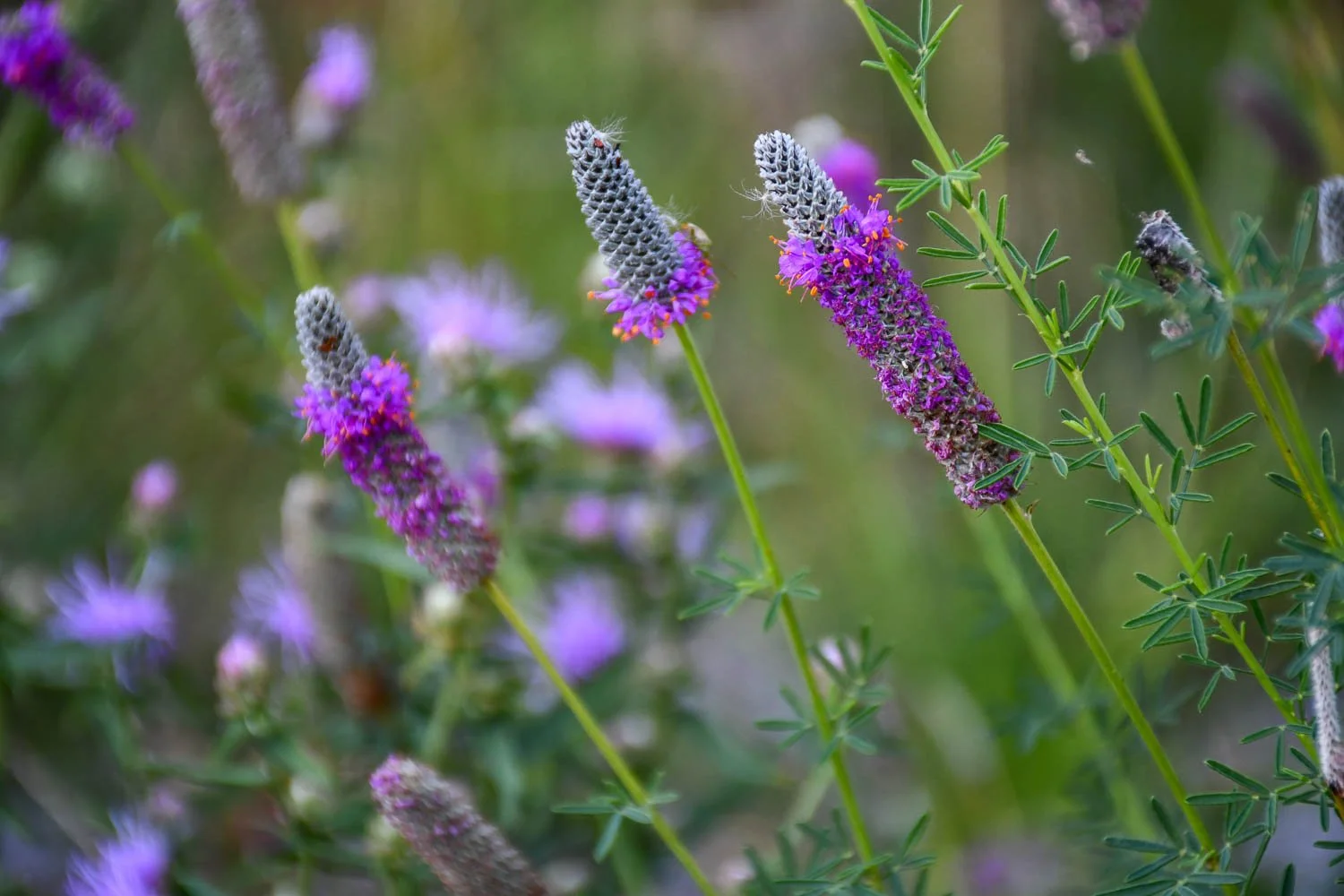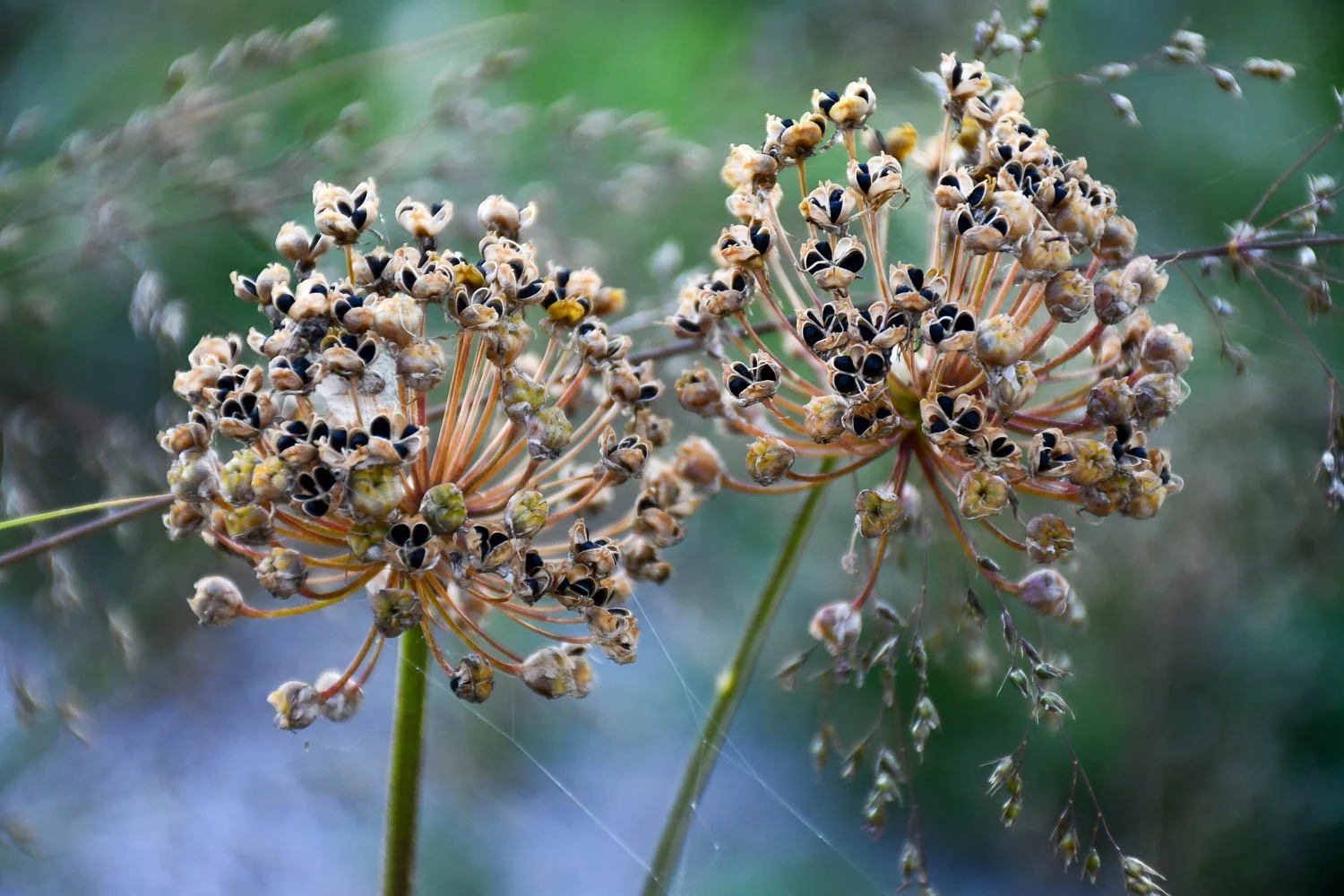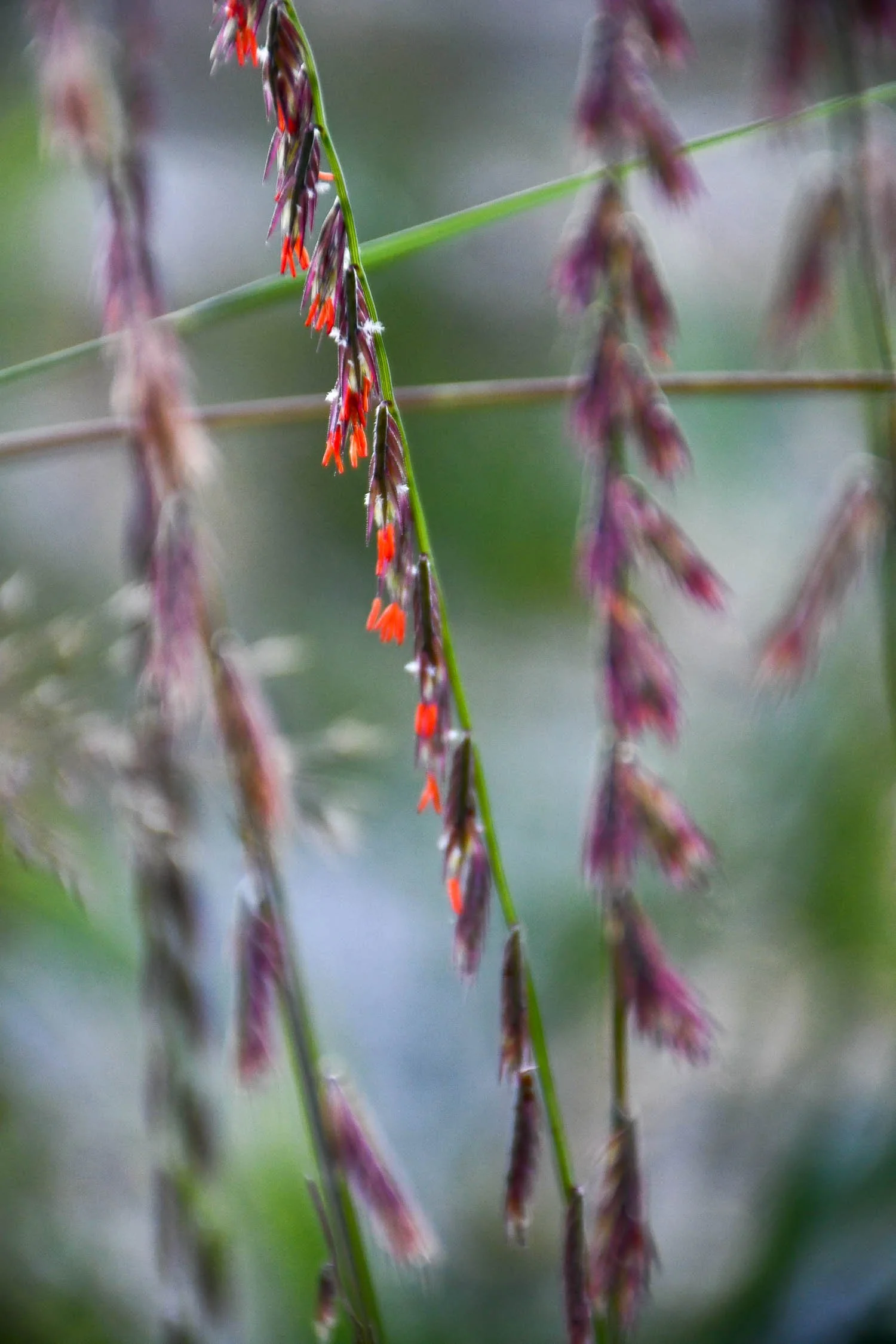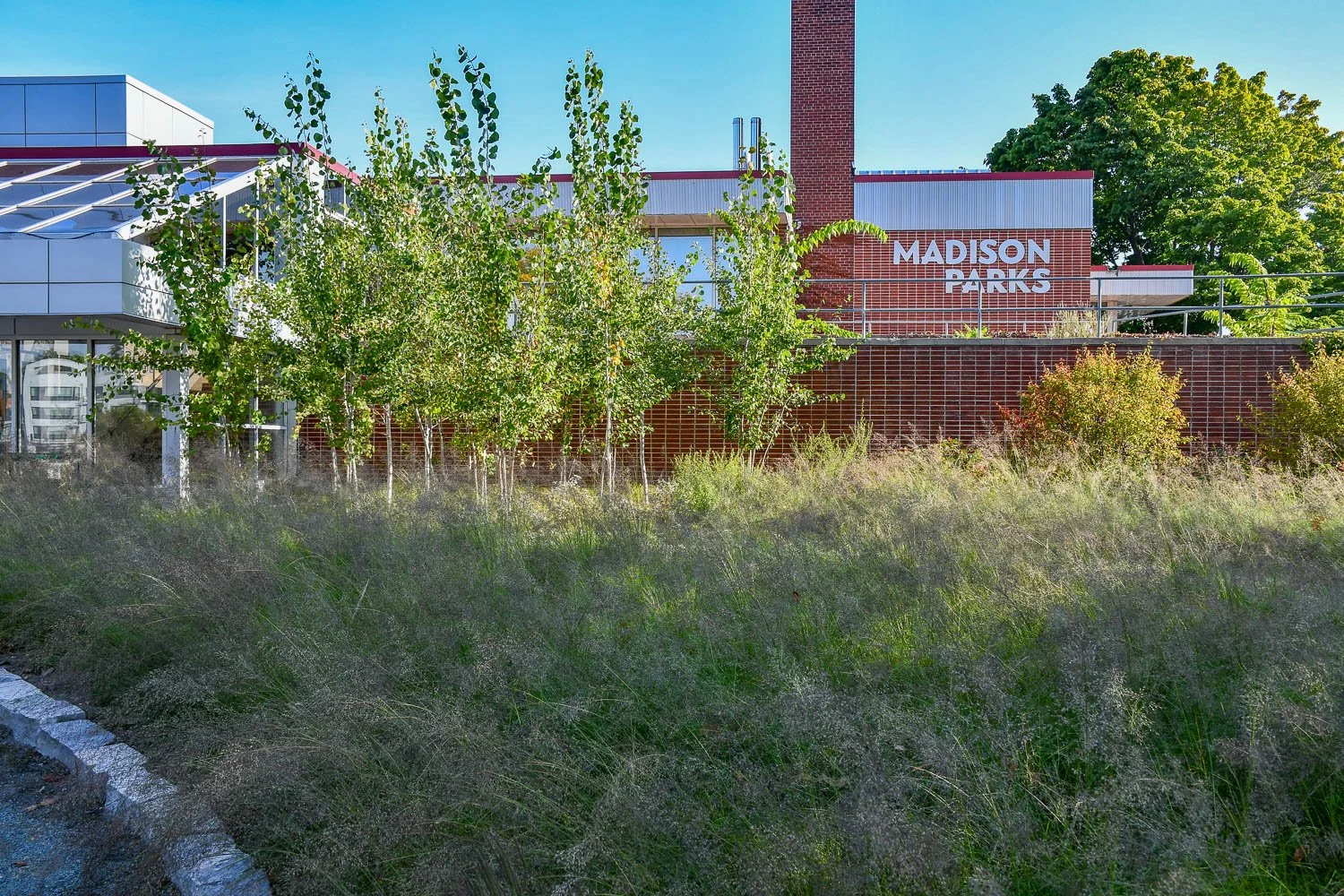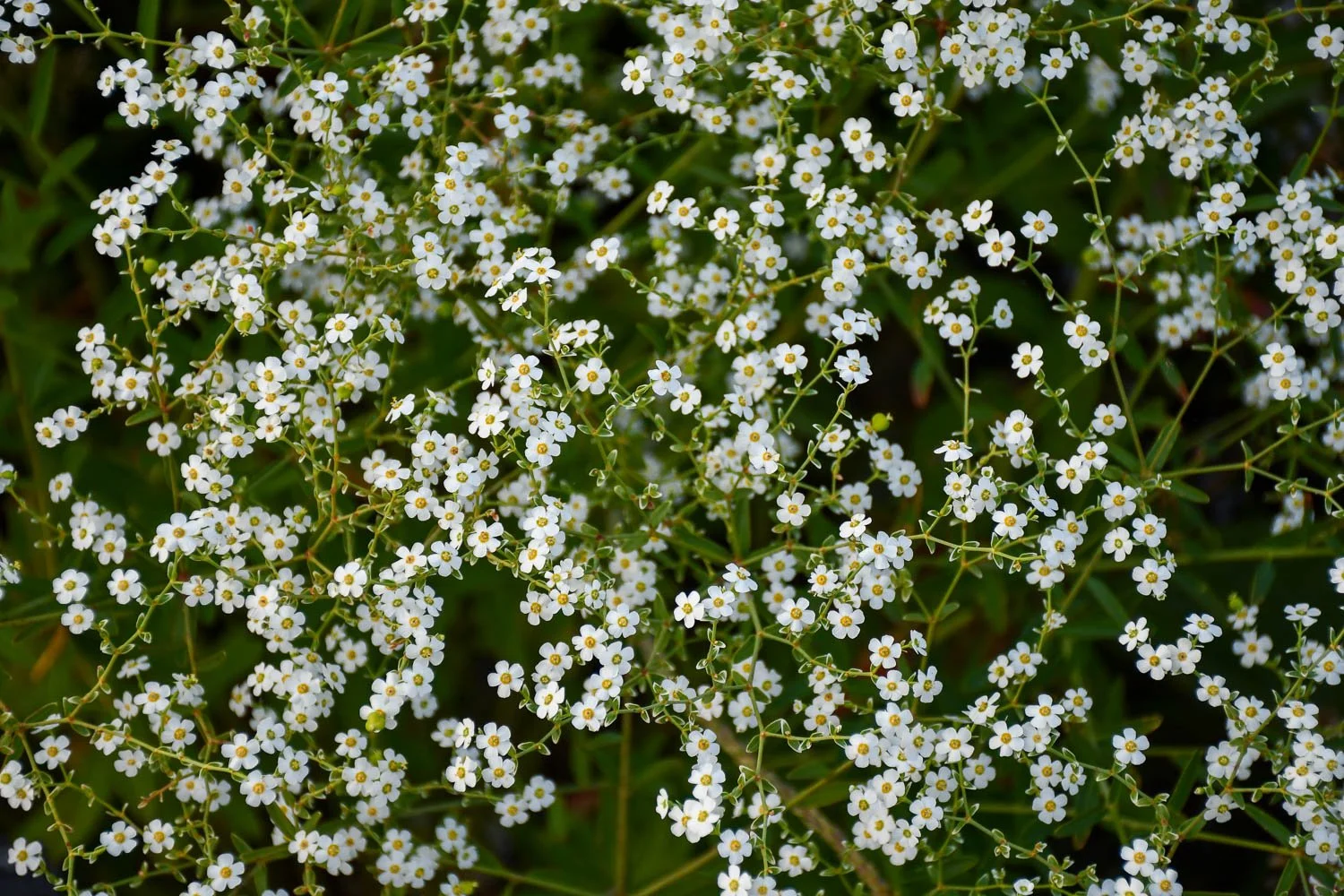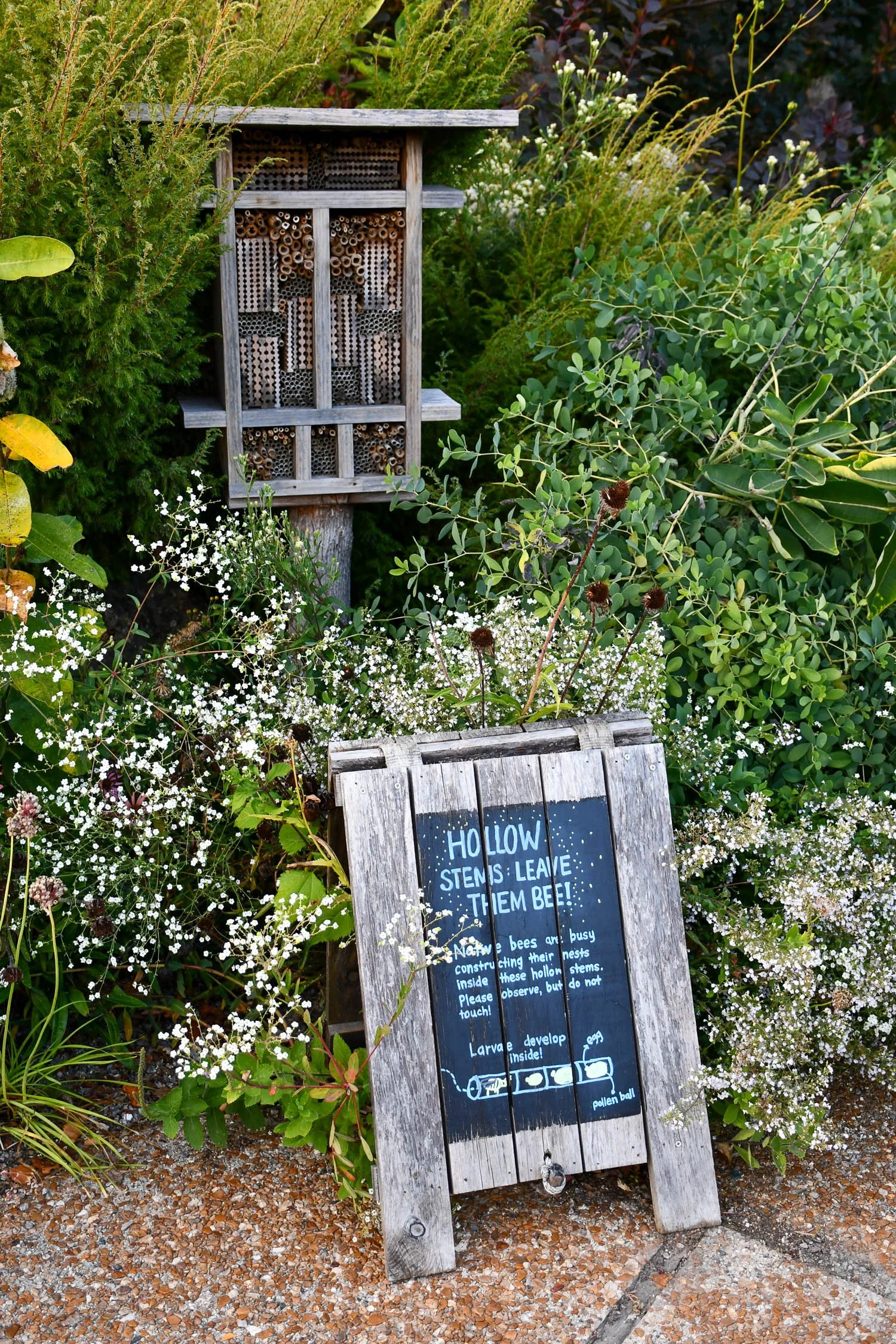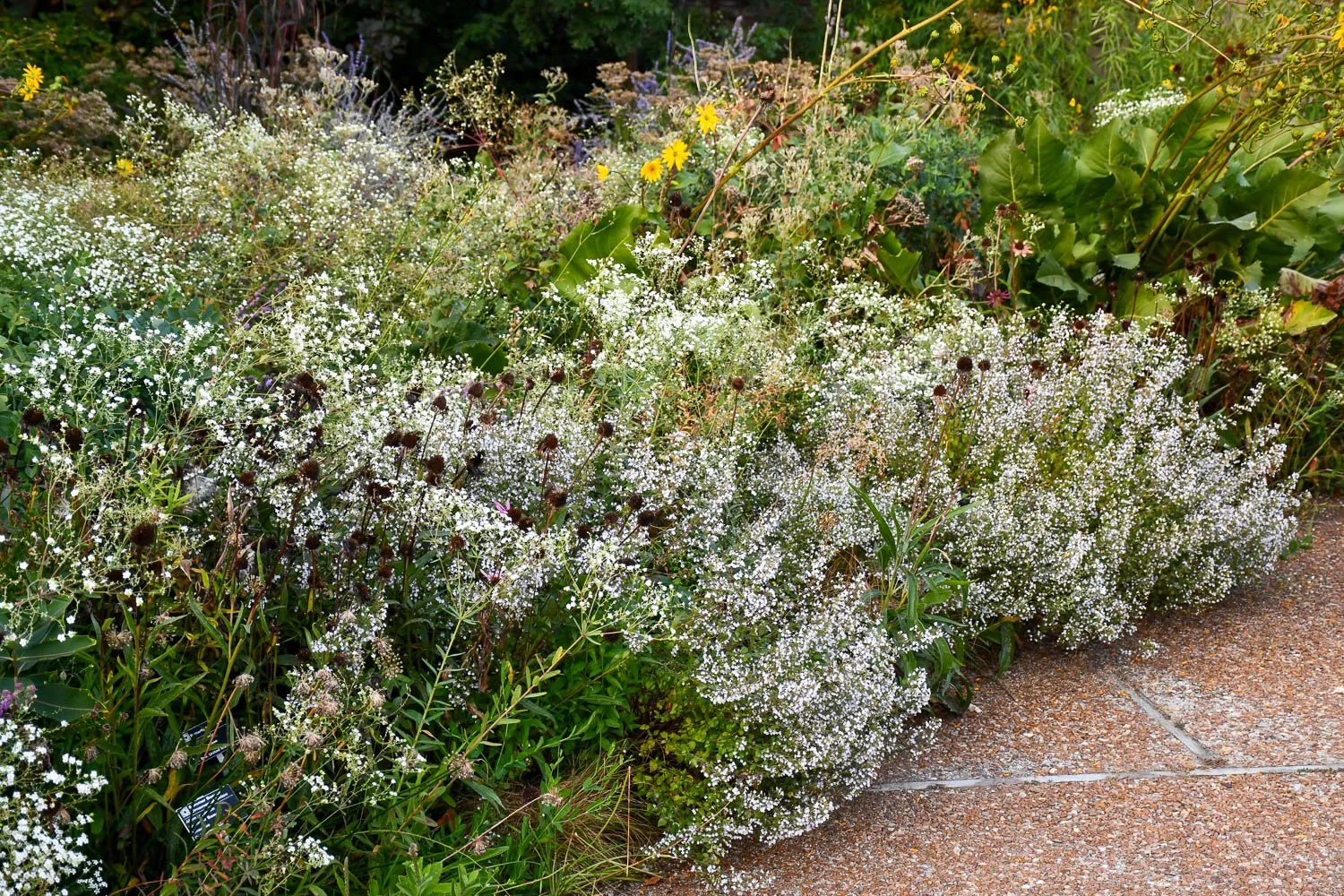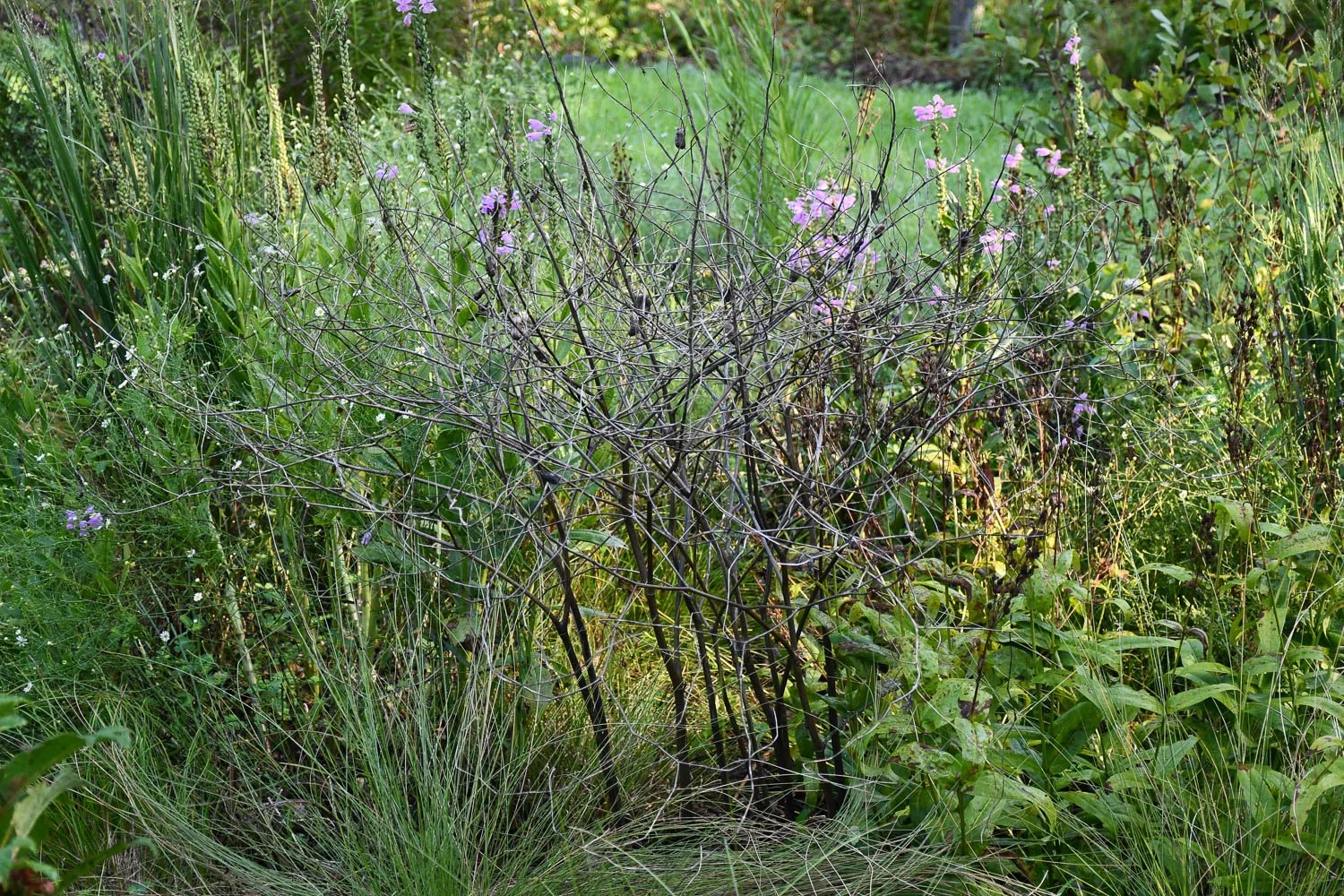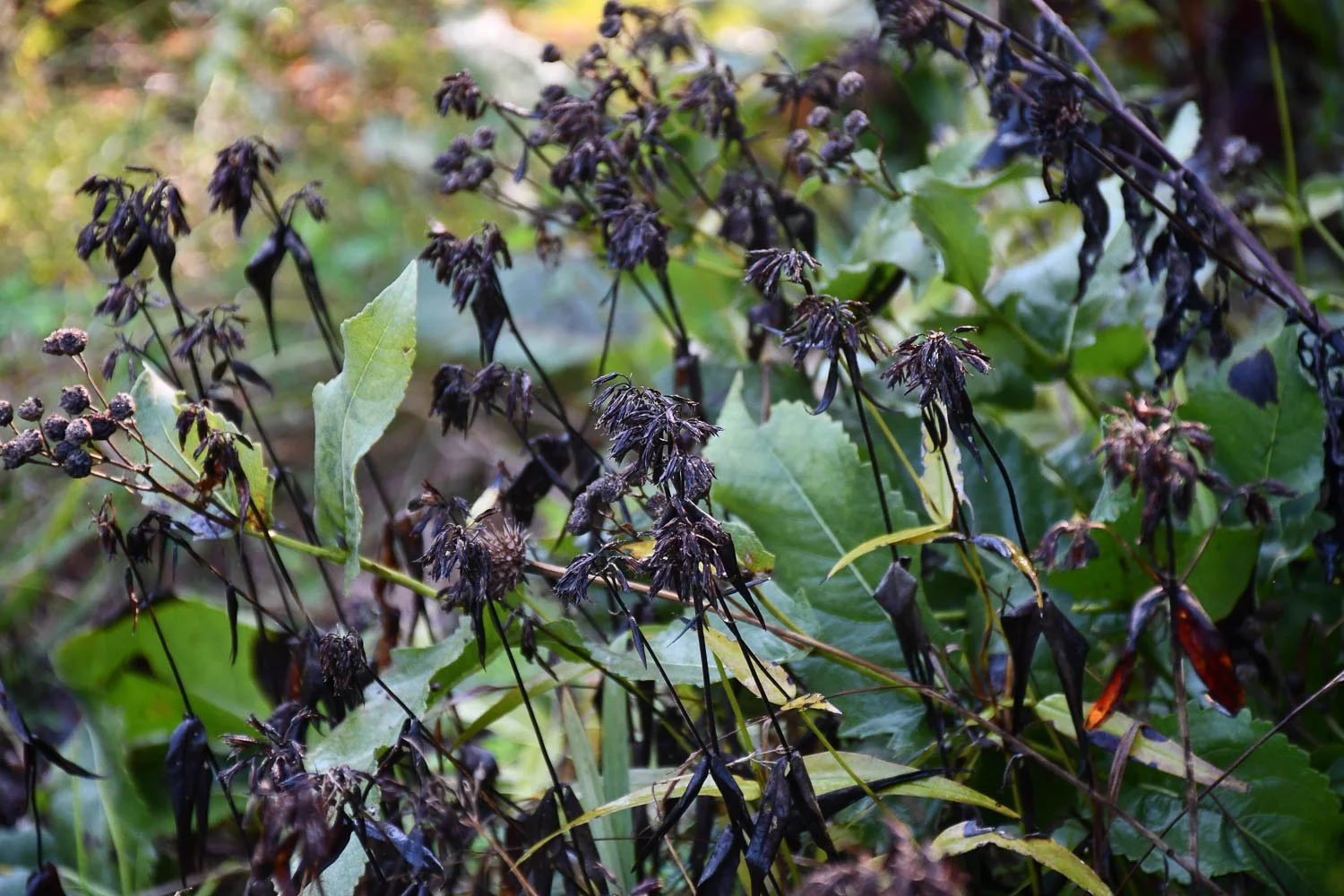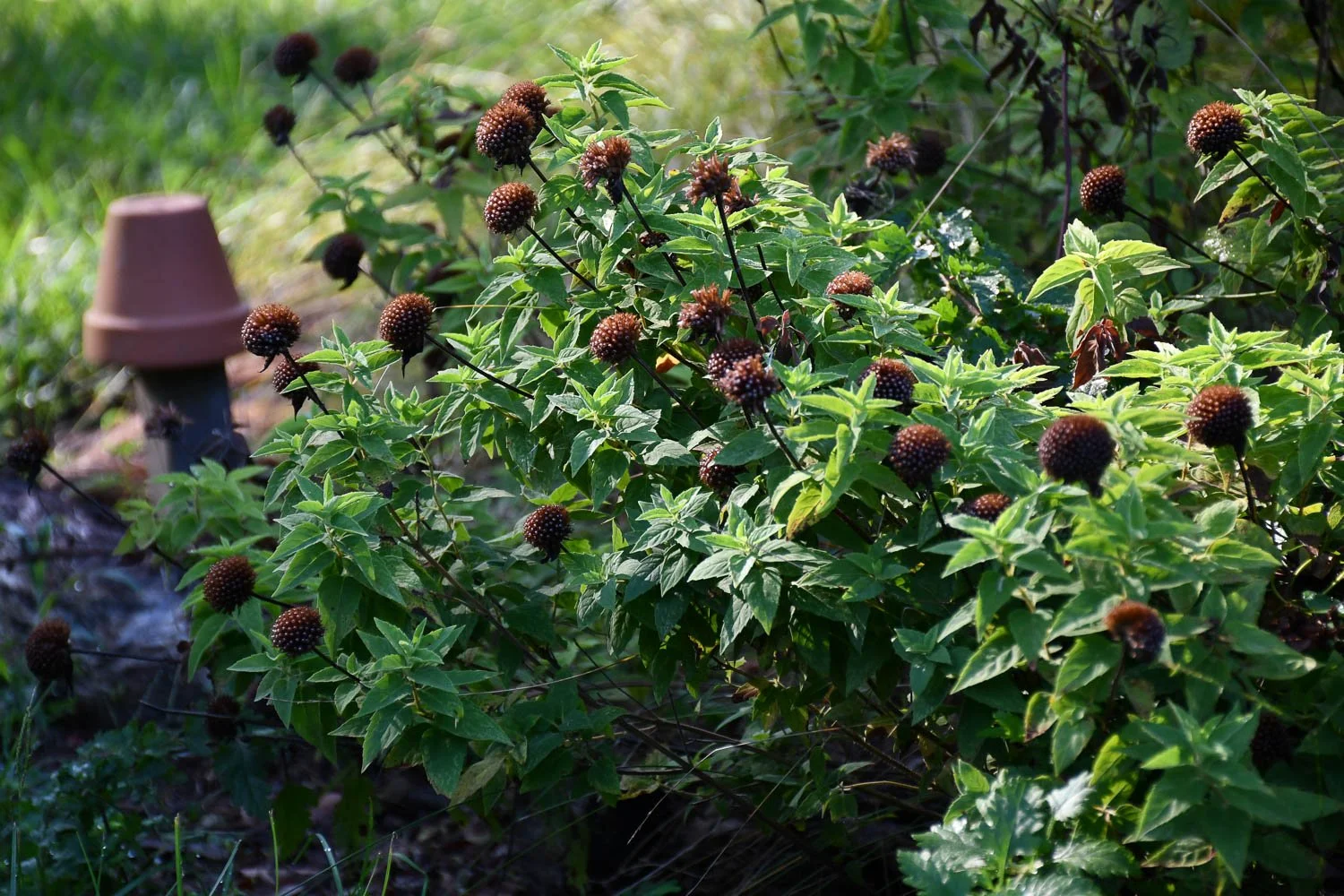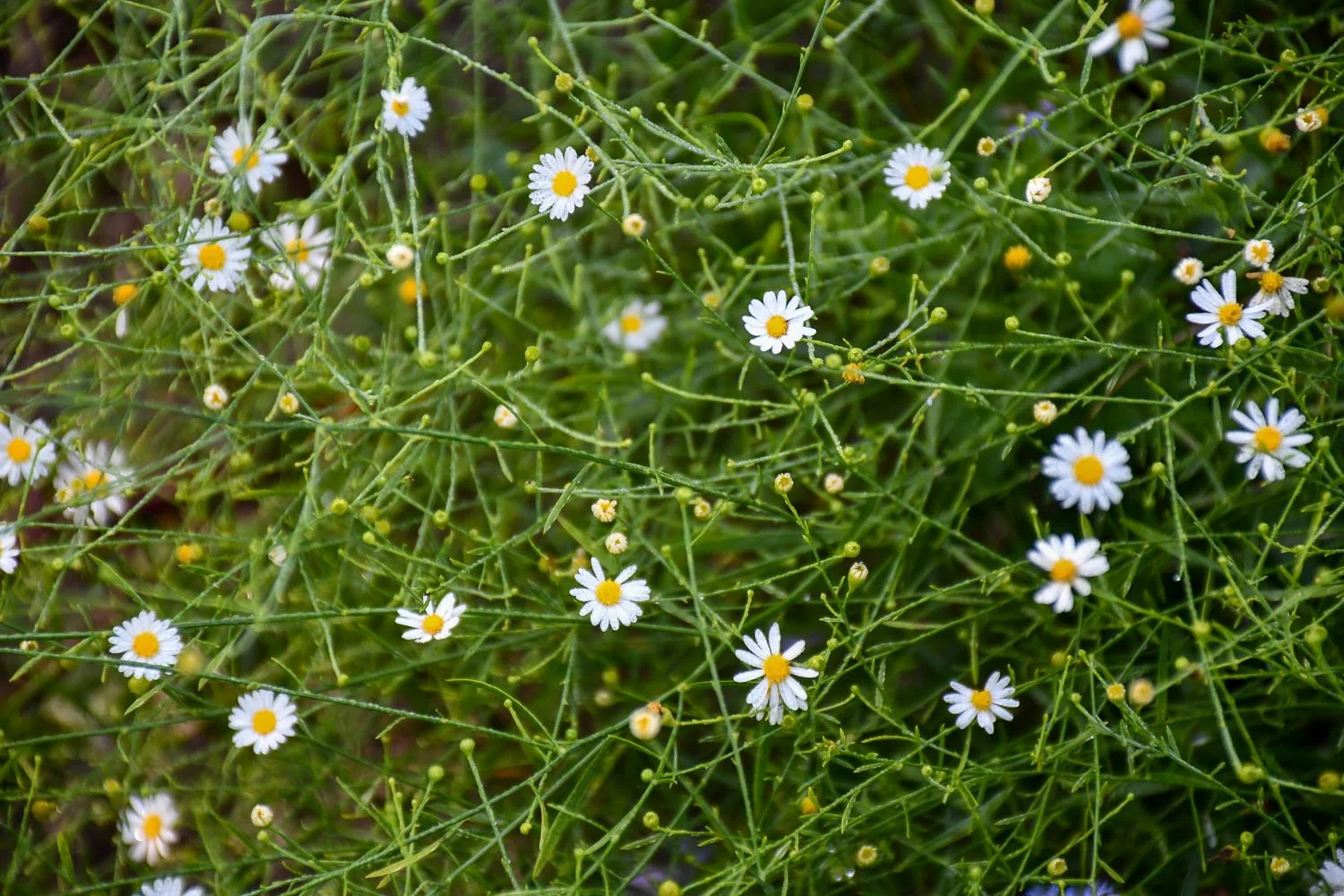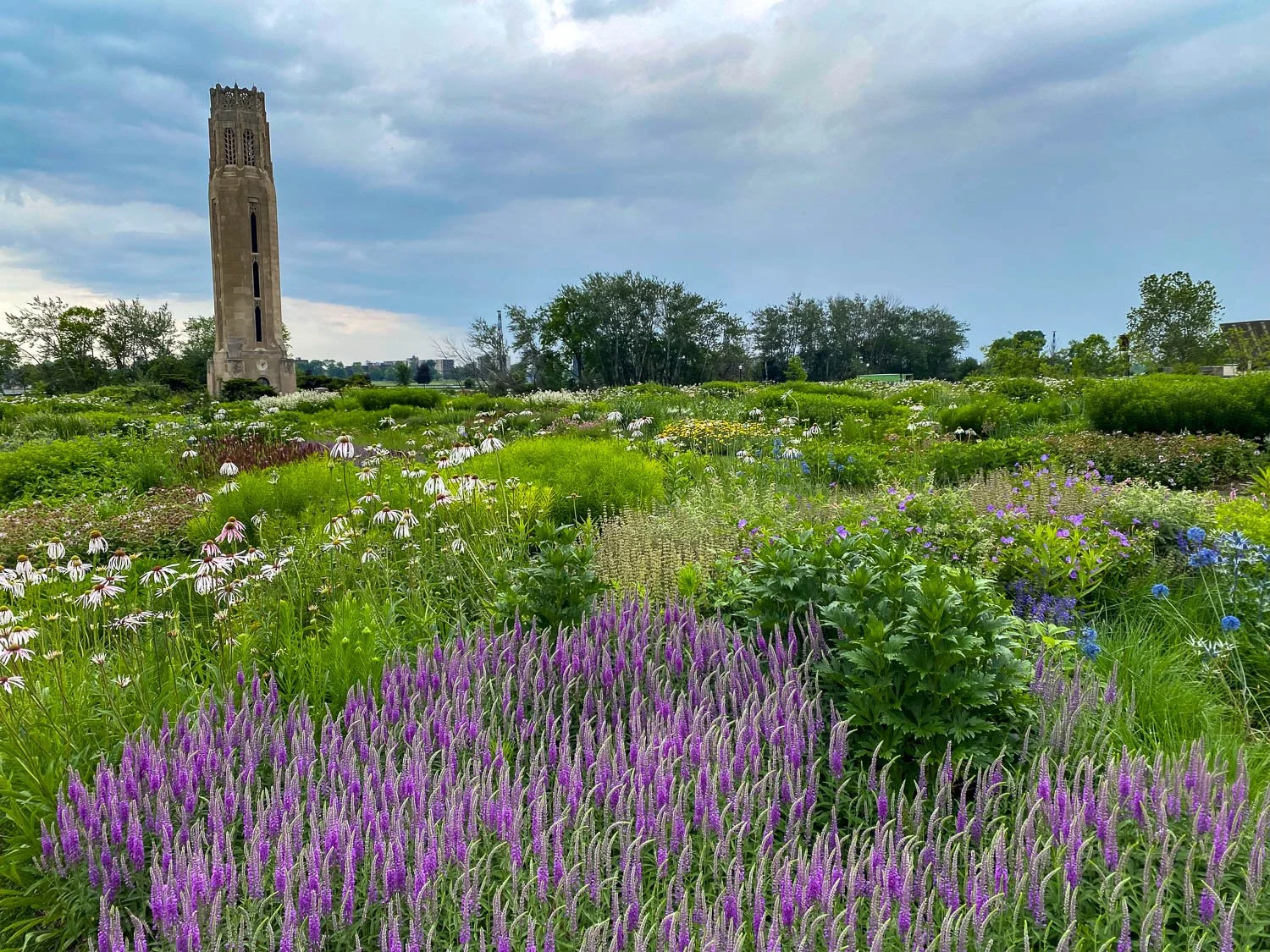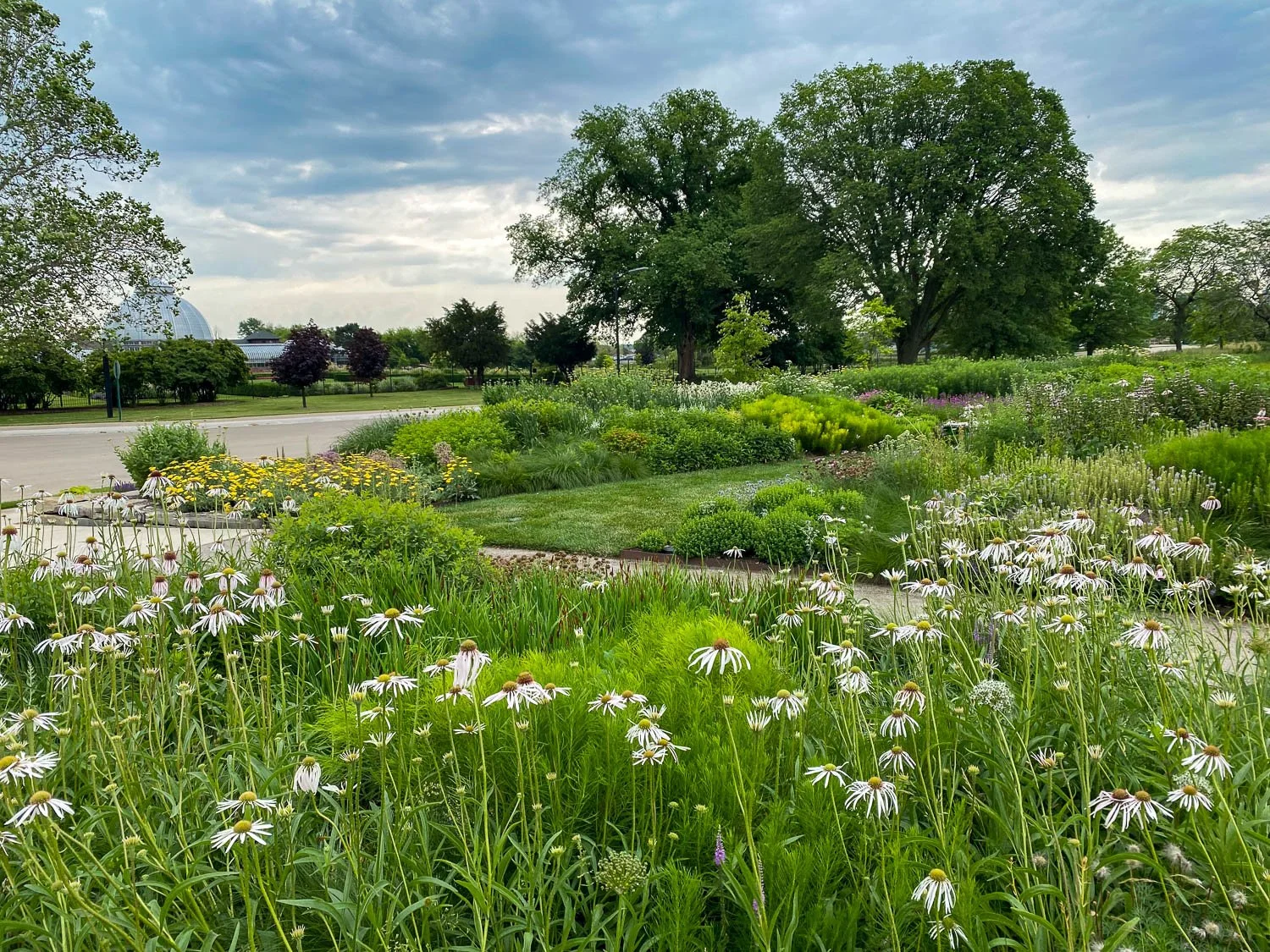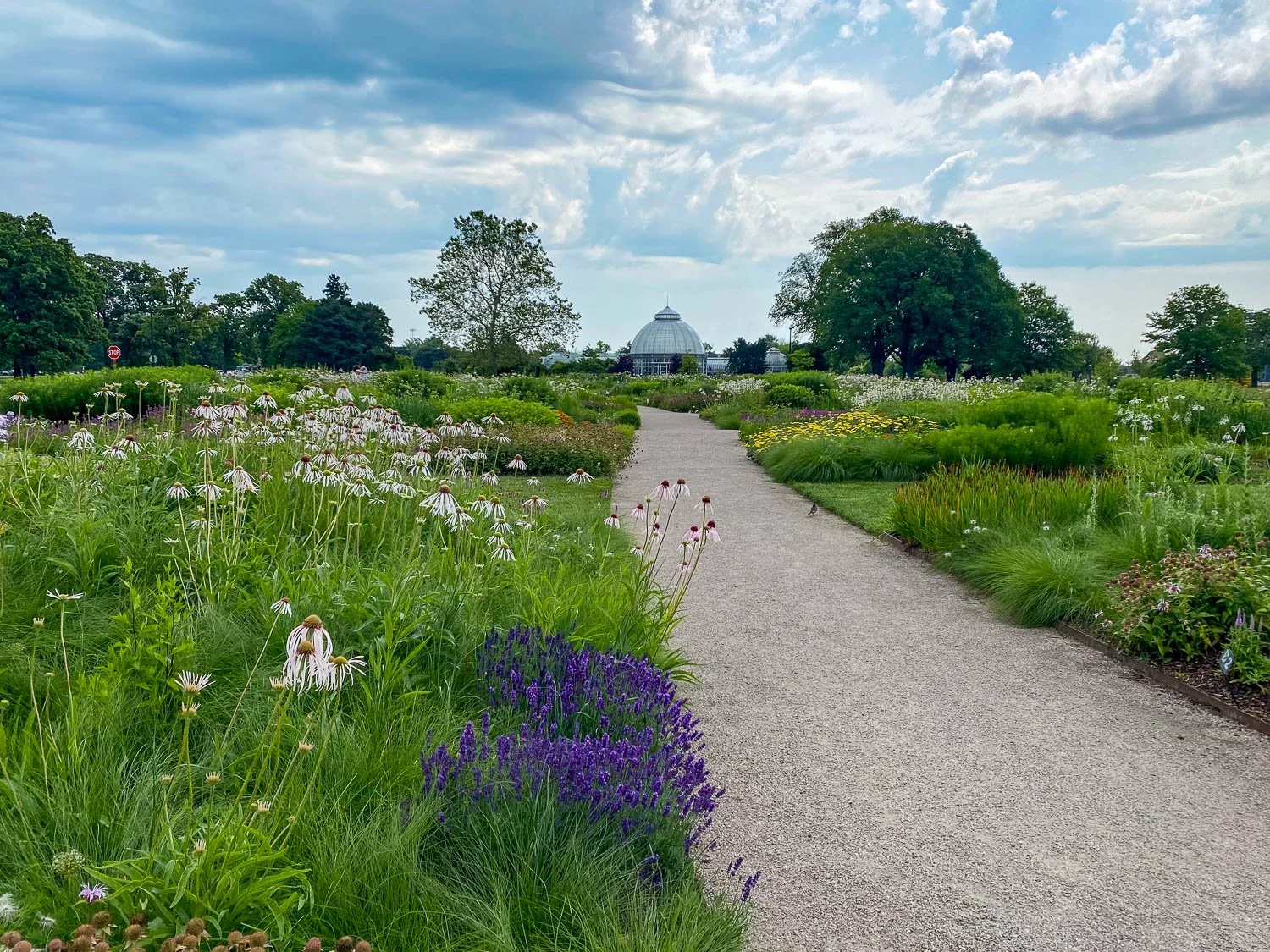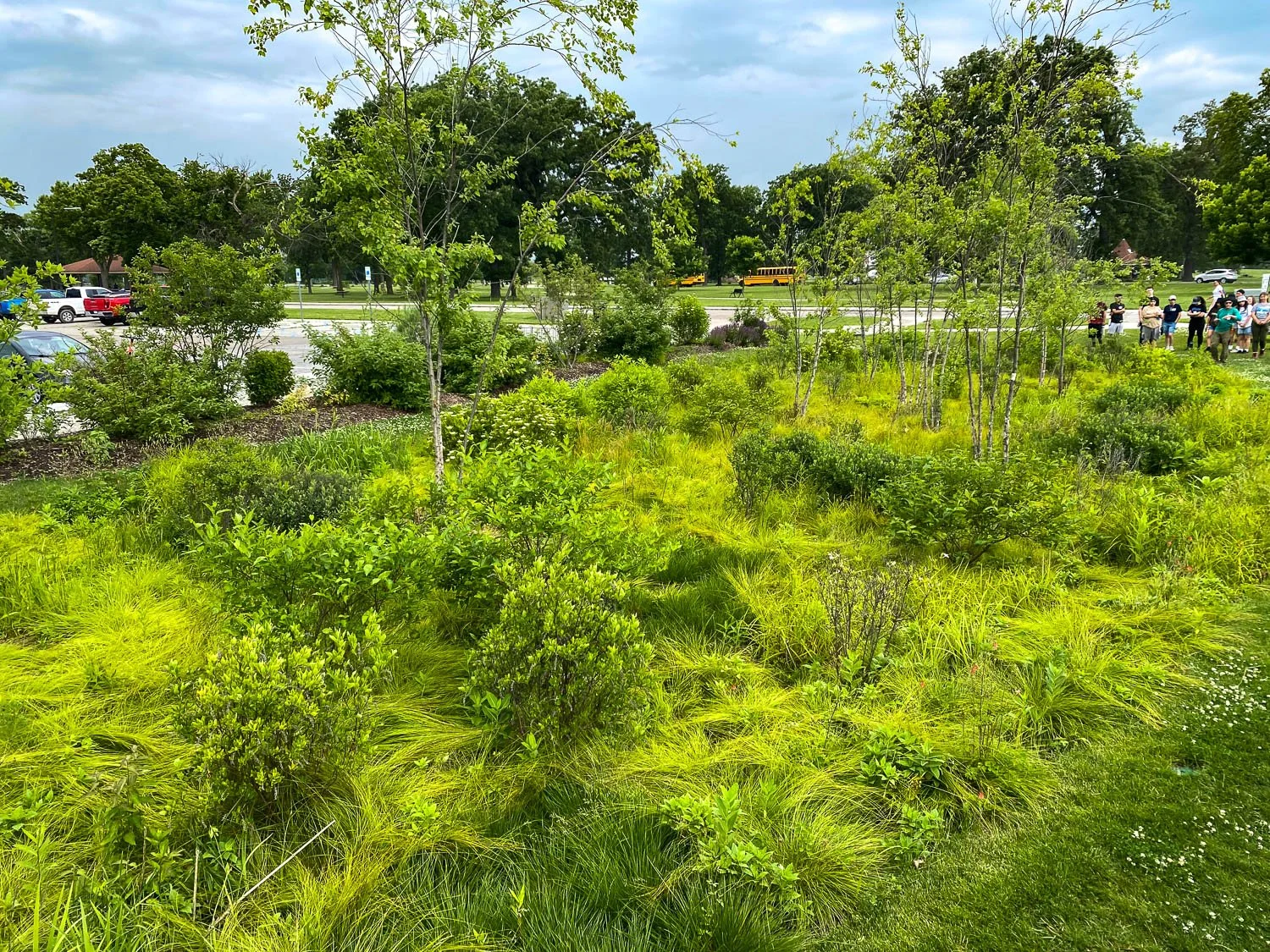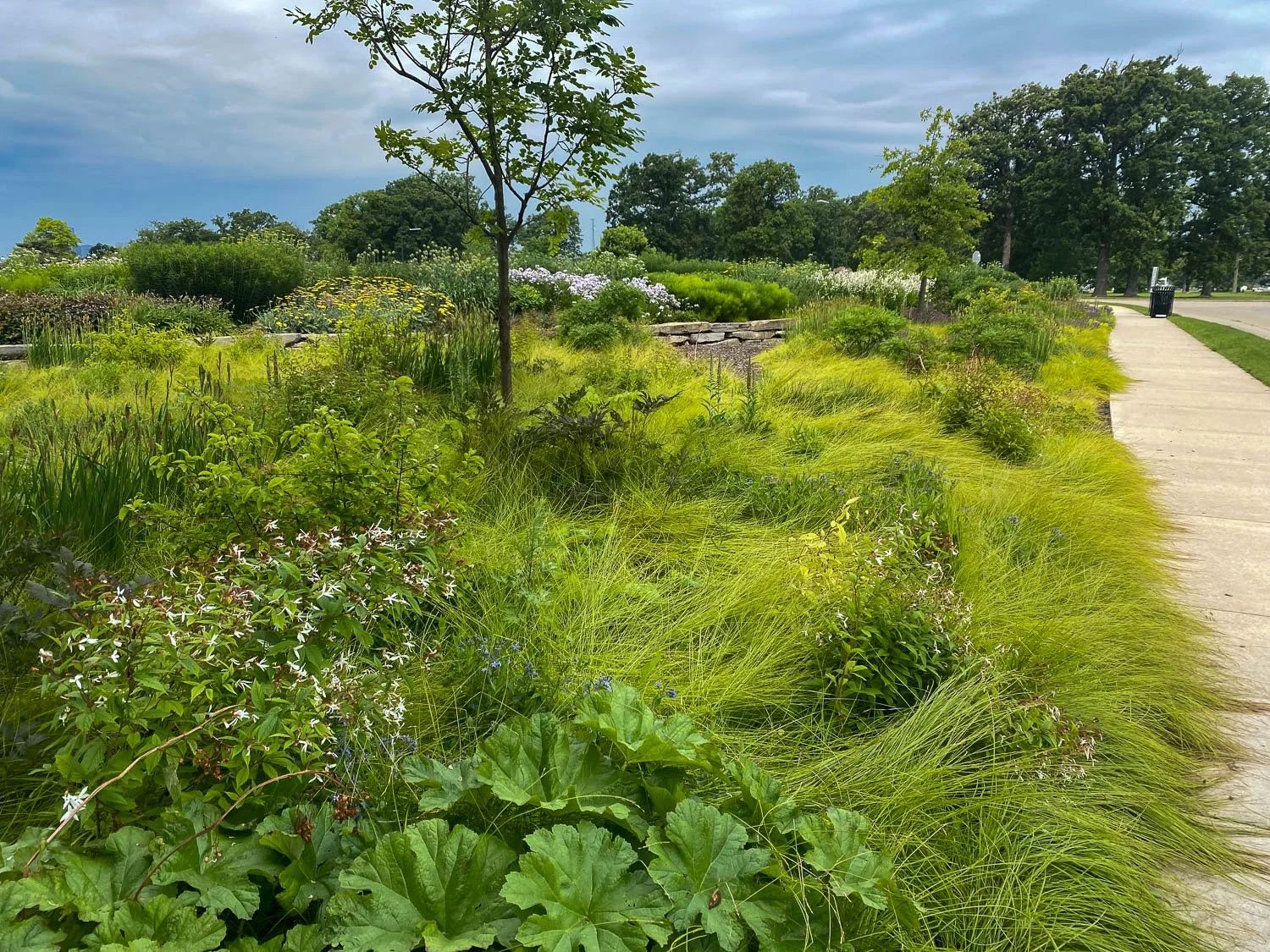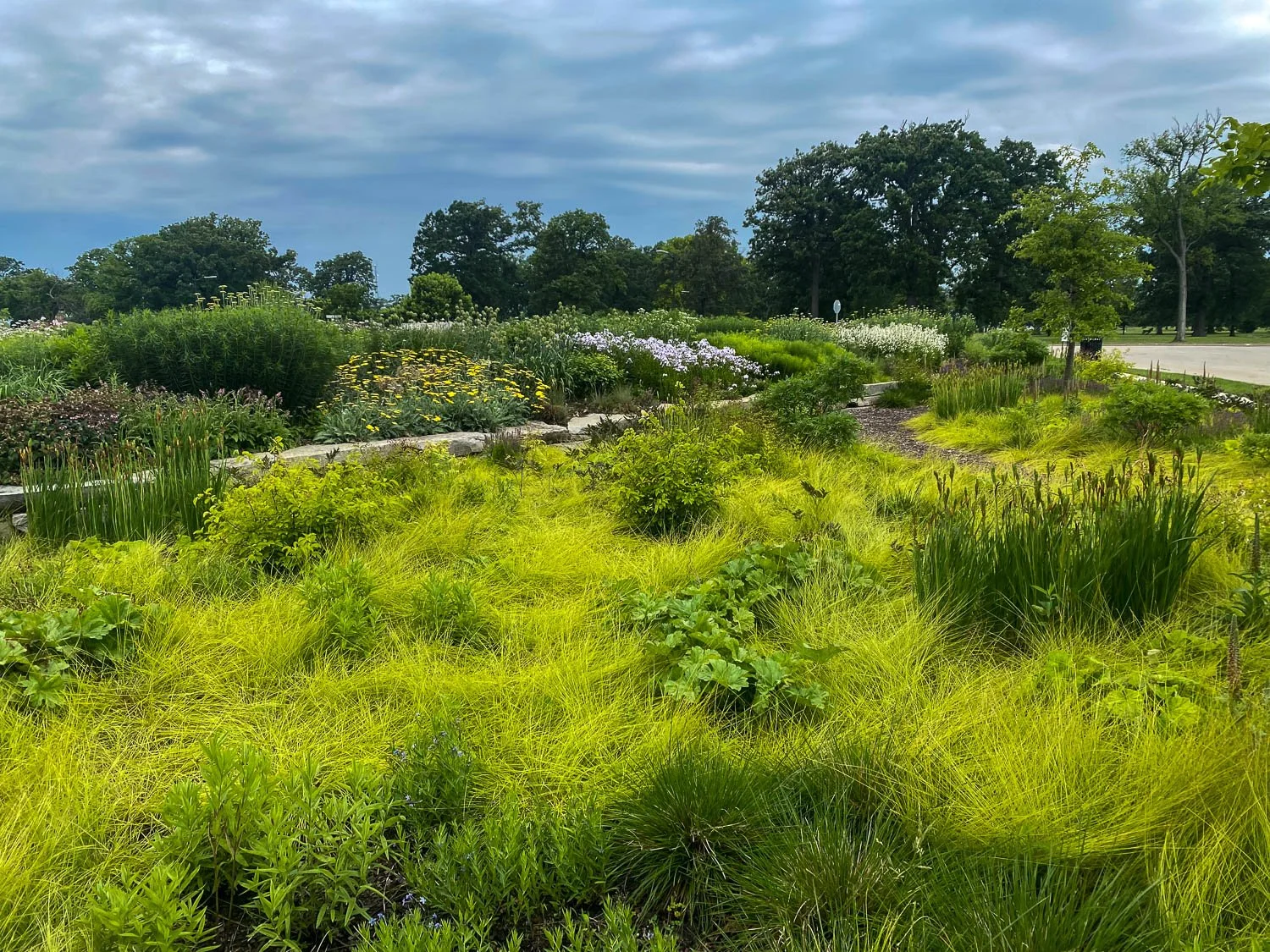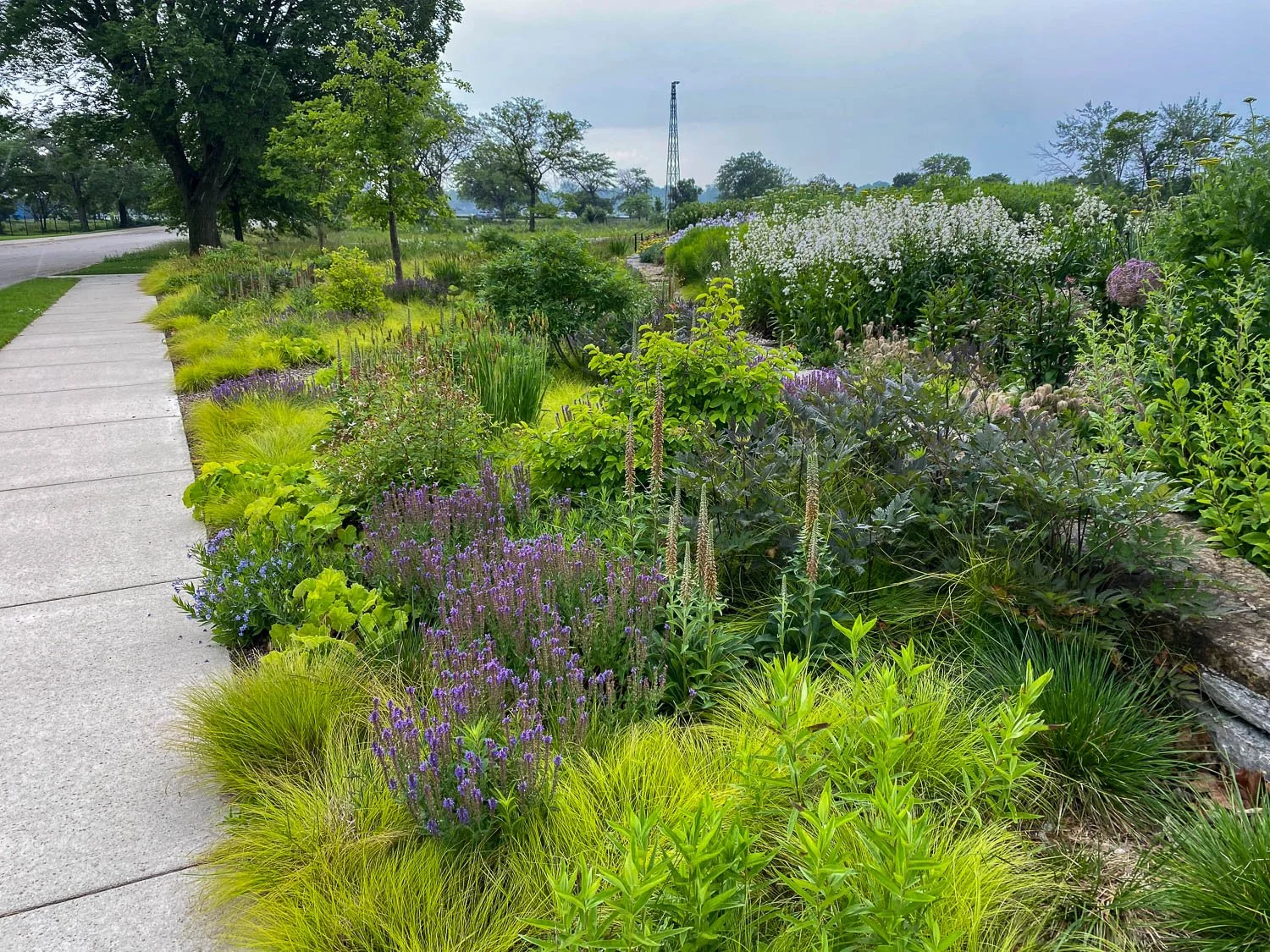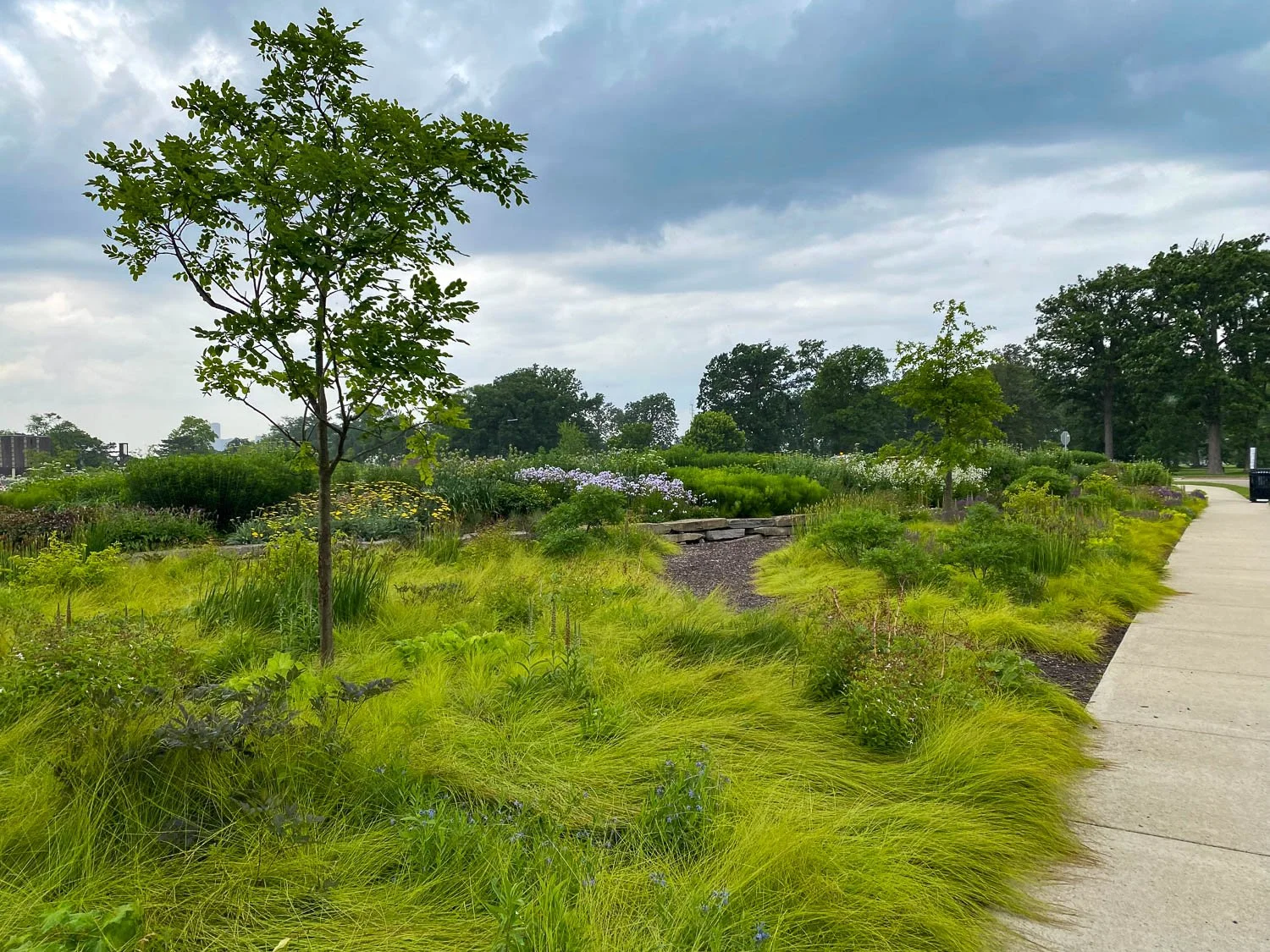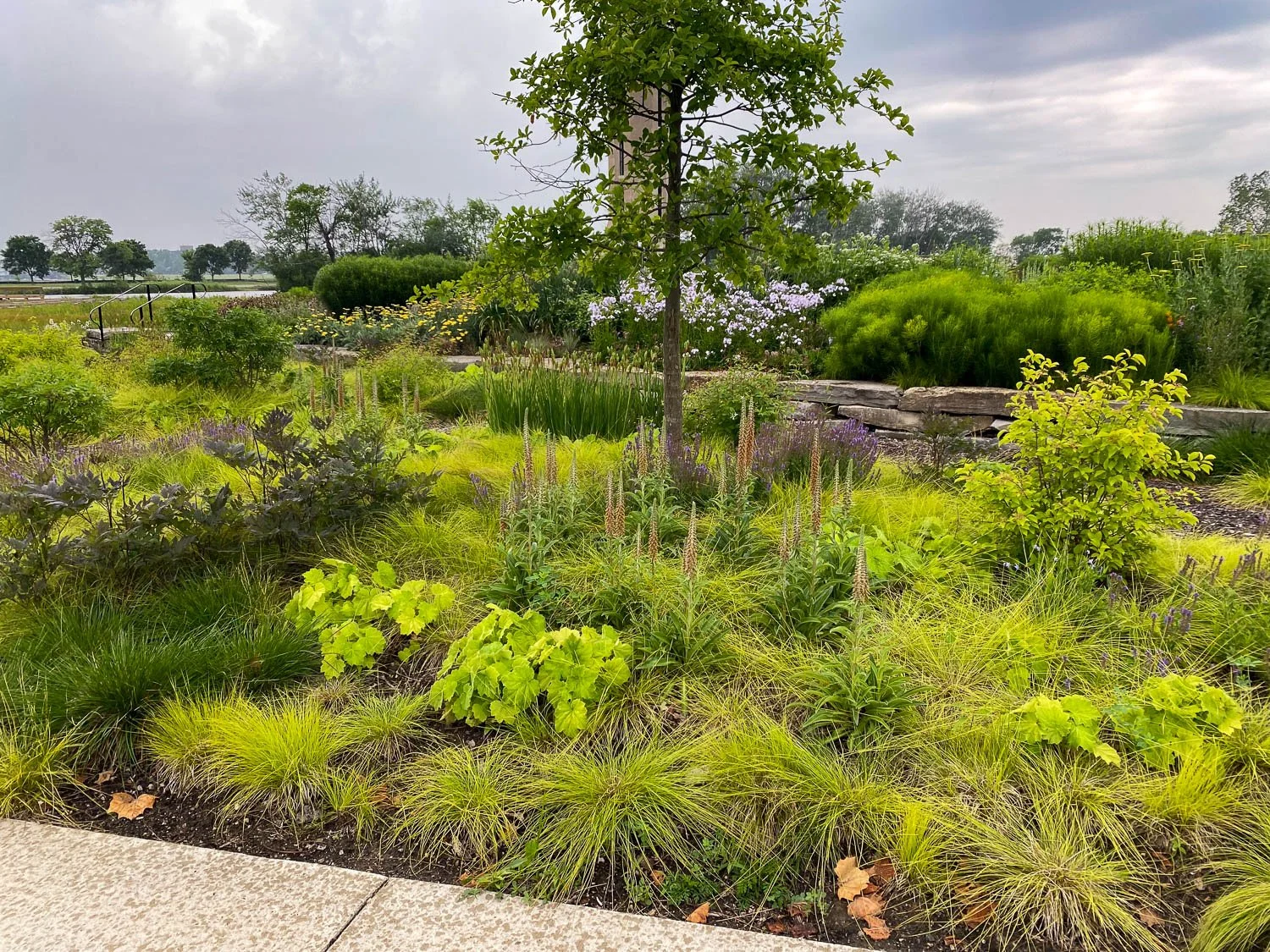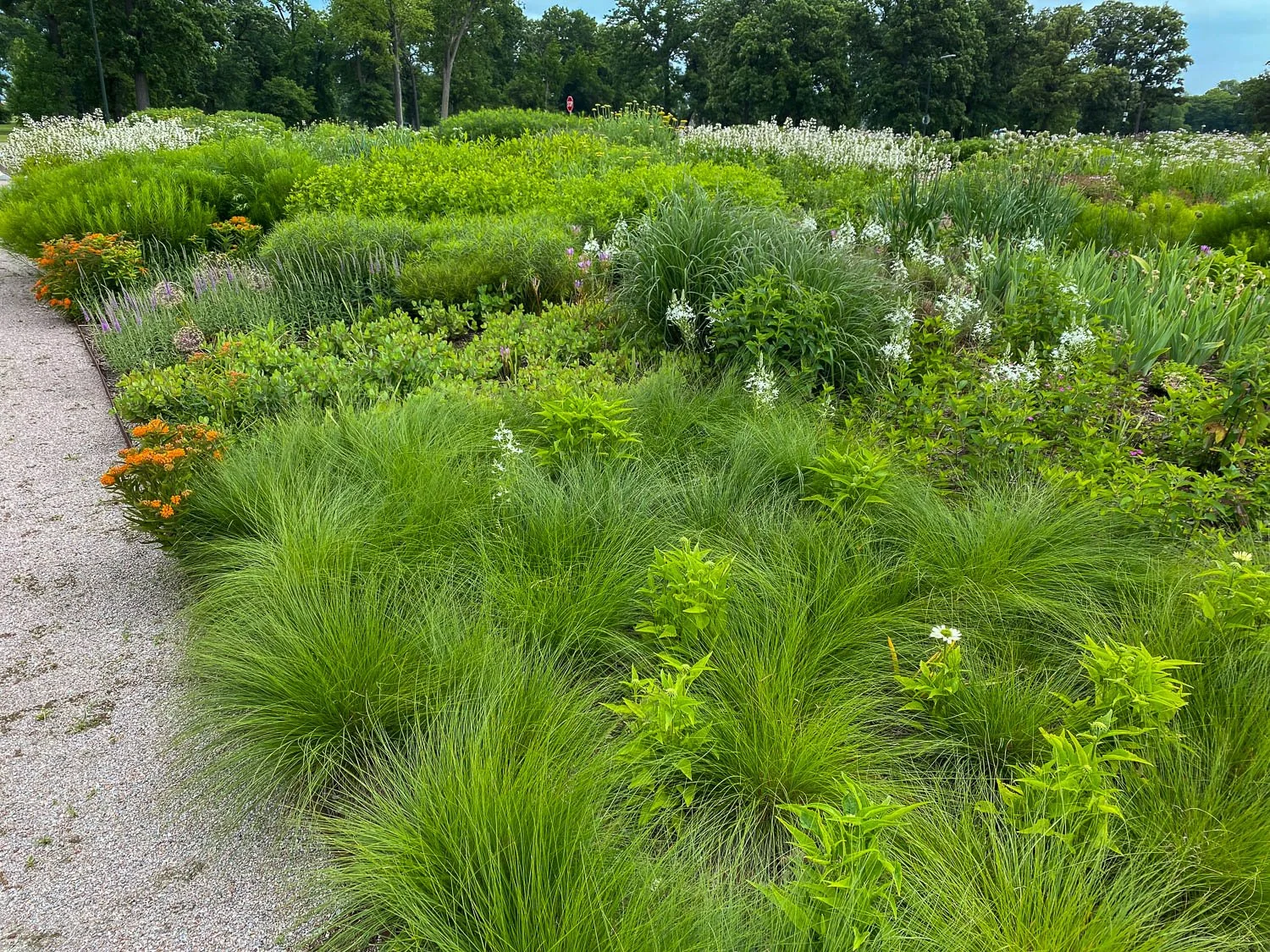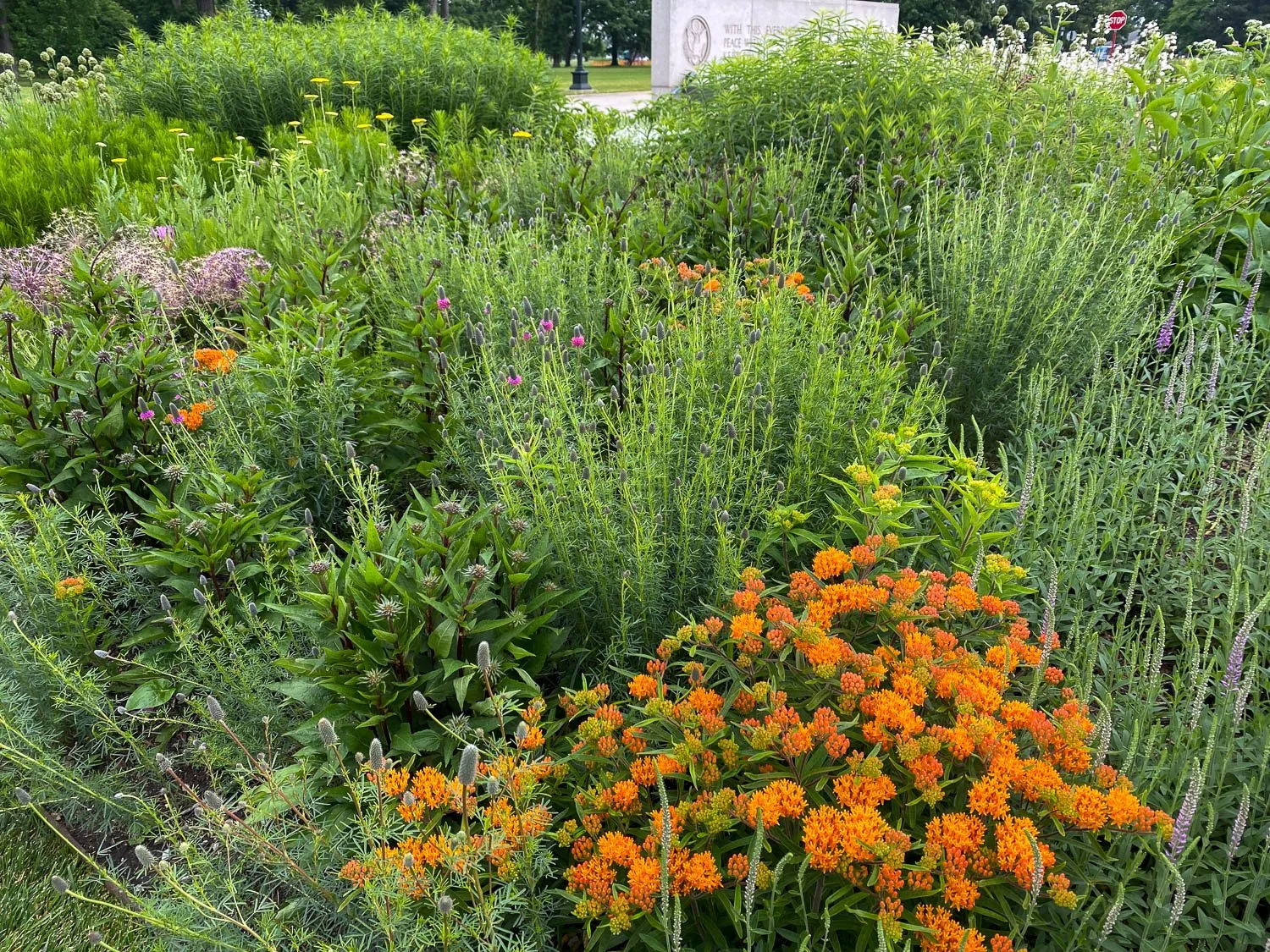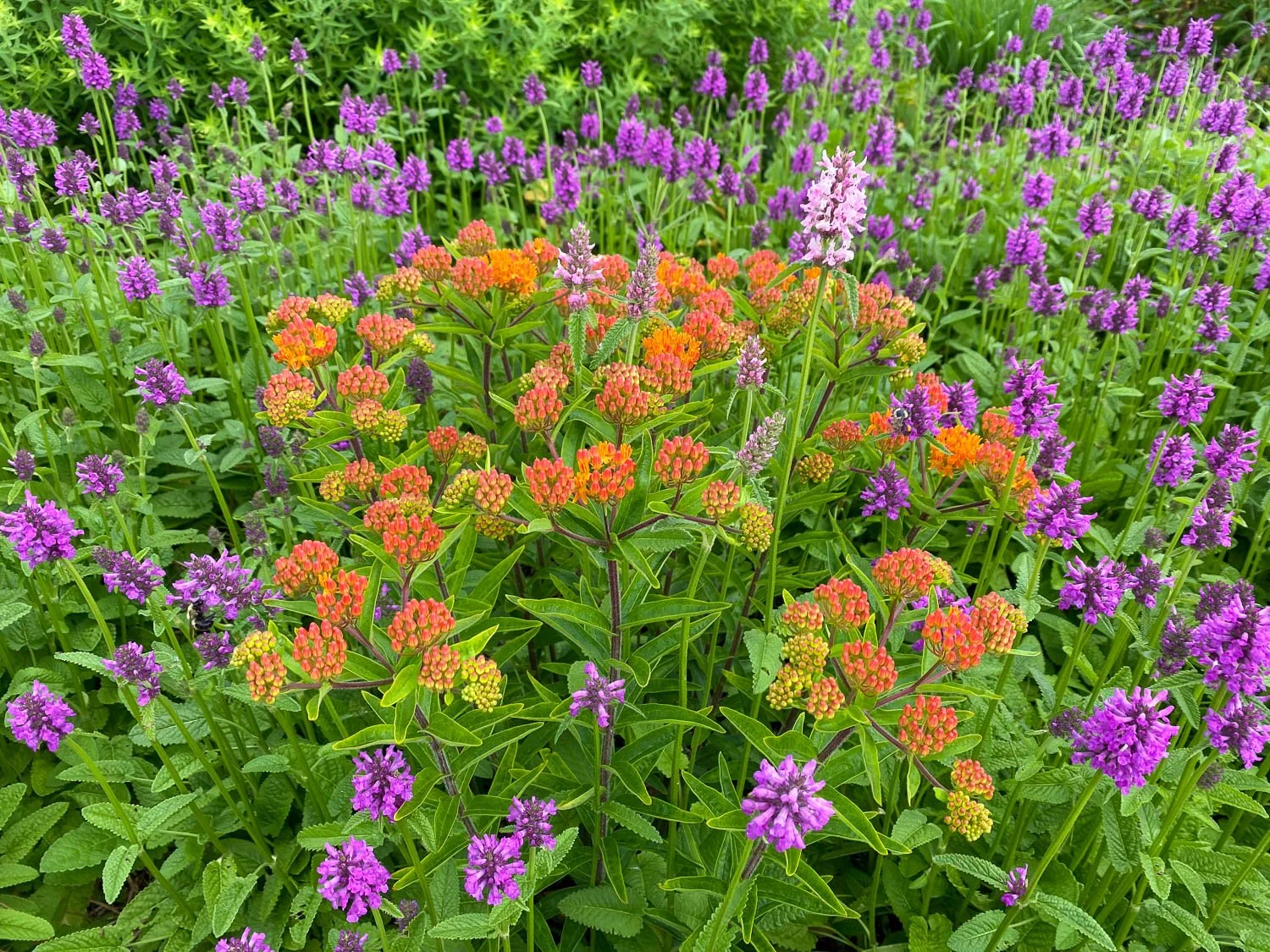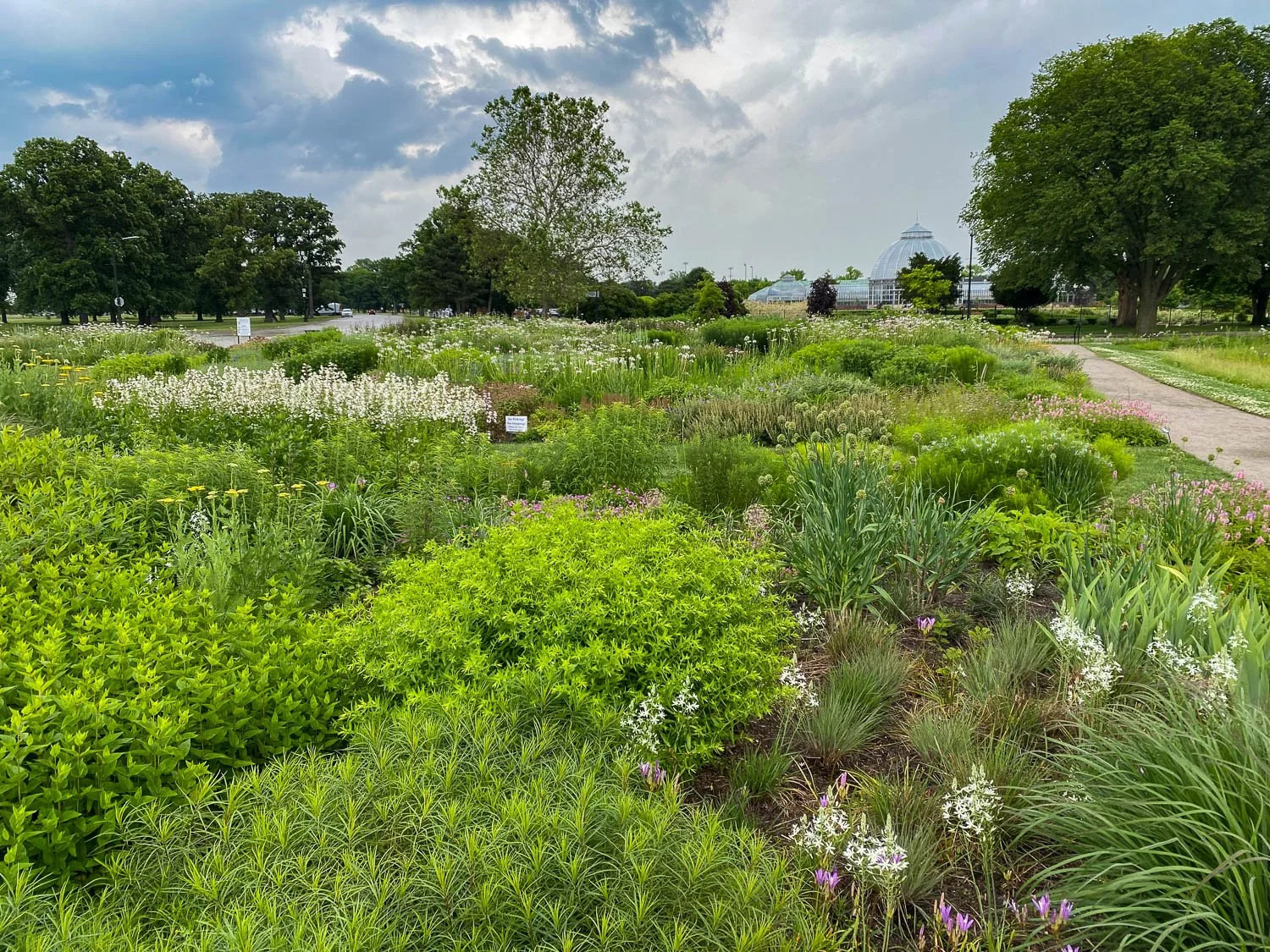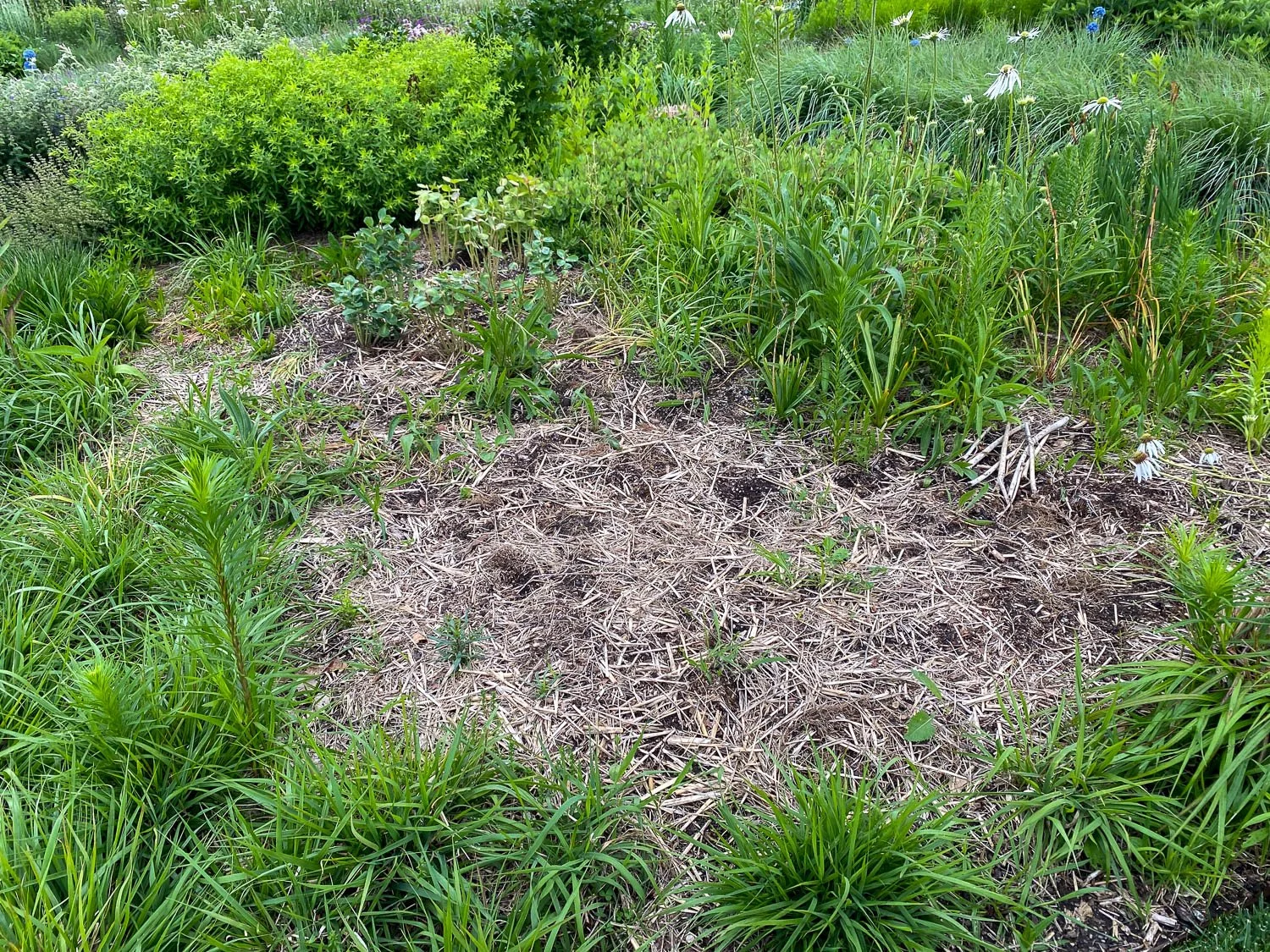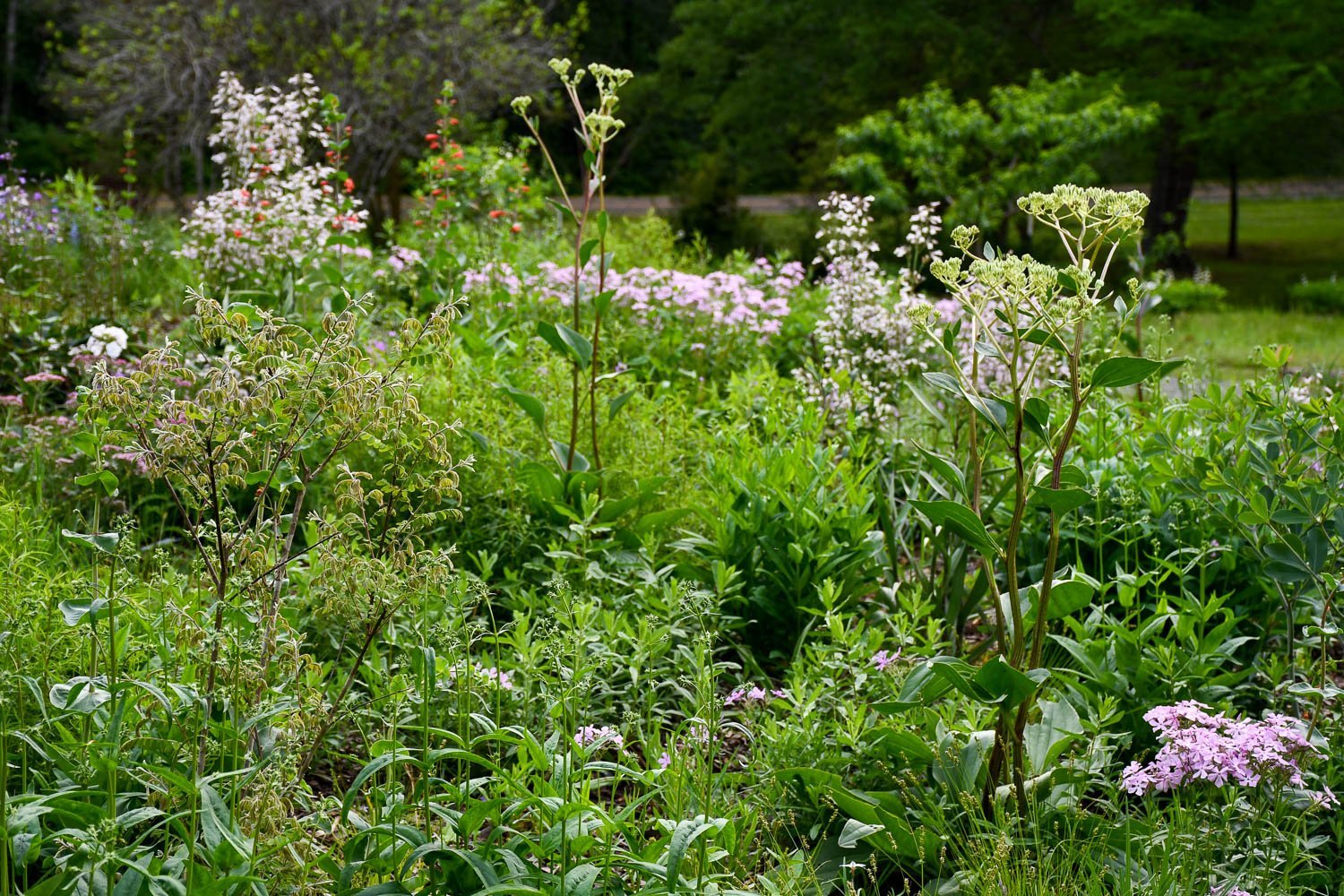Change the way you see plant patterns for better design. My next Botanic Bootcamp session Designing with Sociability on November 10 at 6 pm CST will help you better understand how plants spread, how we can use sociability to create better plantings, and more. Plus, attendees will get a handy-dandy plant sociability list of plant species. Join early for a 20% discount OR become a member and save even more!
One of the challenges that gardeners face when creating naturalistic plantings is how to arrange plants. Questions arise about what species should be combined together and how we can place them to maximize ecology and aesthetics while also minimizing maintenance.
If we look to the natural world for inspiration and observe how plants grow in nature, we will see patterns. One way that horticulturists have figured out how to describe these patterns is with the concept of plant sociability.
What plant patterns do you see in this plant community? Do you see solo viburnums, waves of red blueberries, patches of grasses, and spears of goldenrods? We can explain these with sociability.
So, what is plant sociability?
There are a few sources that give us a deeper understanding.
In Planting in a Post-wild World by Thomas Rainer and Claudia West where I first learned of this concept, they stated that plant sociability is “how far plants in the same population grow from each other,” and it “offers a good model for distinguishing which plants should be massed versus which should be placed individually.”
Brandon George’s incredible capstone project stated that plant sociability is “a measure of the distribution pattern and organization of the [plant] species.”
Nigel Dunnett added in The Dynamic Landscape that sociability helps us understand “the degree of massing that the species shows in the wild.”
And in the original Hansen and Stahl’s Perennials and Their Garden Habits, they dance around a definition saying that “it remains important to group the various species according to their inherent sociability, always taking nature as a guide.”
What they lack in defining it they make up for by creating a sociability classification system. Hansen and Stahl gave us five levels along a gradient to classify sociability. Level 1 is for plants that occur solitary, and Level 5 is for thick stands of a species. From their book they give these categories,
1 singly or in small clusters
2 small groups of 3–10 plants
3 larger groups of 10–20 plants
4 extensive planting in patches
5 extensive plantings over large areas
There are also a few pages of plant classifications along with how far apart to space plants per meter.
Outside of these sources, there’s not much available in the research literature on plant sociability, which is a shame. As one newsletter reader emailed me, everyone seems to talk about this magic approach to grouping plants and yet there is much lacking on the approach. So, here are a few things I keep in mind.
A SIMPLE ANALOGY FOR PLANT SOCIABILITY
I like to think about sociability like watching how people sit on an empty plane with no assigned seats.
Some people come in and space out as they sit solitary. Others get on and claim rows as small groups, say a family of four with grandparents in tow. And, then there’s the whole sports team that takes up a third of the plane all sitting together, weaving themselves around the singletons and small groups.
On the plane, people sit in these patterns based on their connection with each other (family, relationships) and the environment (what seats are available when purchasing; the resources needed (aka dolla dolla bill y’all) for a first class versus a middle seat).
For plants, they grow in patterns because there is an interaction with their connection to each other (in this case plant genetics influencing how they spread and reproduce) and the environment (what spots are available to grow; amounts of resources of light, water, and nutrients; etc.), too.
Unlike our plane example where the greatest in number would be those flying solo or in small groups, plants with low sociability usually constitute the lower numbers in the community, and plants with higher sociability tend to be more dominant and plentiful.
Pick your seat. In this space we see Asclepias tuberosa (orange milkweed) spaced out as a low sociability plant.
Don’t be confused by the numbers
I’m not trying to reinvent the wheel here, but I think that numbers Hansen and Stahl use can be lost on some people because they have to memorize what 1 or 5 means. So I like to add the descriptors to sociability levels—very low (1), low (2), medium (3), high (4), and very high (5). I think that it helps amateurs better think through whether their plants should be treated as loners, light minglers, or gregarious party animals.
Numbers can also shift slightly based on growing conditions. Higher levels of sociability are usually associated with richer resources. For example, a wet site might shift a low (2) or medium (3) sociability up to a high level (4). But, the extremes usually don’t move to the other end. A species with very low sociability will likely never reach very high sociability, and it would look a bit odd if it did. And, species that have very high sociability planted as a single plant aren’t living up to their full potential. Give them 40 years and then they’ll be carpeting the ground.
This planting of Yucca (yucca) was done for a modernist effect, but it looks a bit odd because as a low sociability species it should not be planted so close. It would have been more effective to randomly scatter clumps in the Sporobolus (prairie dropseed) matrix.
Sociability HELPS gardeners DESIGN AND PLANT BETTER
I think too often we gardeners are in the habit of creating gardens that are plant collections of single plants or as Tony Avent calls this approach, “drifts of one.” I know that I have been still am guilty of it. I mean, it wasn’t my fault I had to grow and trial so many different species to see what would die, survive, and thrive here in east Texas. At least, that’s what I tell myself.
Now that interest is growing in naturalistic planting, we can’t apply that same approach. We can’t plant singletons far apart and then just pour mulch around the plants. There needs to be some level of coherence and legibility. Otherwise, the planting can look chaotic.
When you consider sociability in design, you’re not going to the garden center and buy one each of 40 different species. Instead, you pick a few plants with very low/low sociability to stand out, a few groups of medium sociability to keep the seasonal interest going through the year, and many plugs of the high/very high sociability patch formers.
A naturalistic planting at Epic campus in Wisconsin. Note how some species like the Symphyotrichum (aster) are grouped together while others occur singly.
It may be hard to invest money on 30-50% of the plants that are going to just be green groundcovers with high/very high sociability. And, sure you could wait for those plants that typically grow in higher sociability to increase in number, but having one Carex texensis (Texas sedge), Packera aurea (golden groundsel), or Pachysandra procumbens (Allegheny spurge) is just going to look weird. We are used to seeing them in larger groups instead of isolated.
Sociability also helps us understand and anticipate how a species will spread and perform in the garden. For example, Helianthus angustifolius is a Level 4 (high) sociability plant. I planted two a few years ago in my garden, and they quickly began to spread via rhizomes and seed. Now I have tons of it.
And, something like Yucca rostrata that has lower sociability will look best if it’s more isolated. I shouldn’t anticipate it quickly spreading around.
Helianthus angustifolius (swamp sunflower) blooms in autumn. Even though I planted a couple, this high sociability species has made its presence known in my garden.
PRACTICE SEEING SOCIABILITY
If this concept is new to you, start practicing applying it today. Walk through a natural area or your garden, and pay attention to which species occur in groups small or big group and which plants stand alone.
That mental shift will help you start seeing your plantings as a community, and that’s the first step toward designing with sociability. Once you start seeing those relationships, you’ll never look at your garden or nature the same way again.





